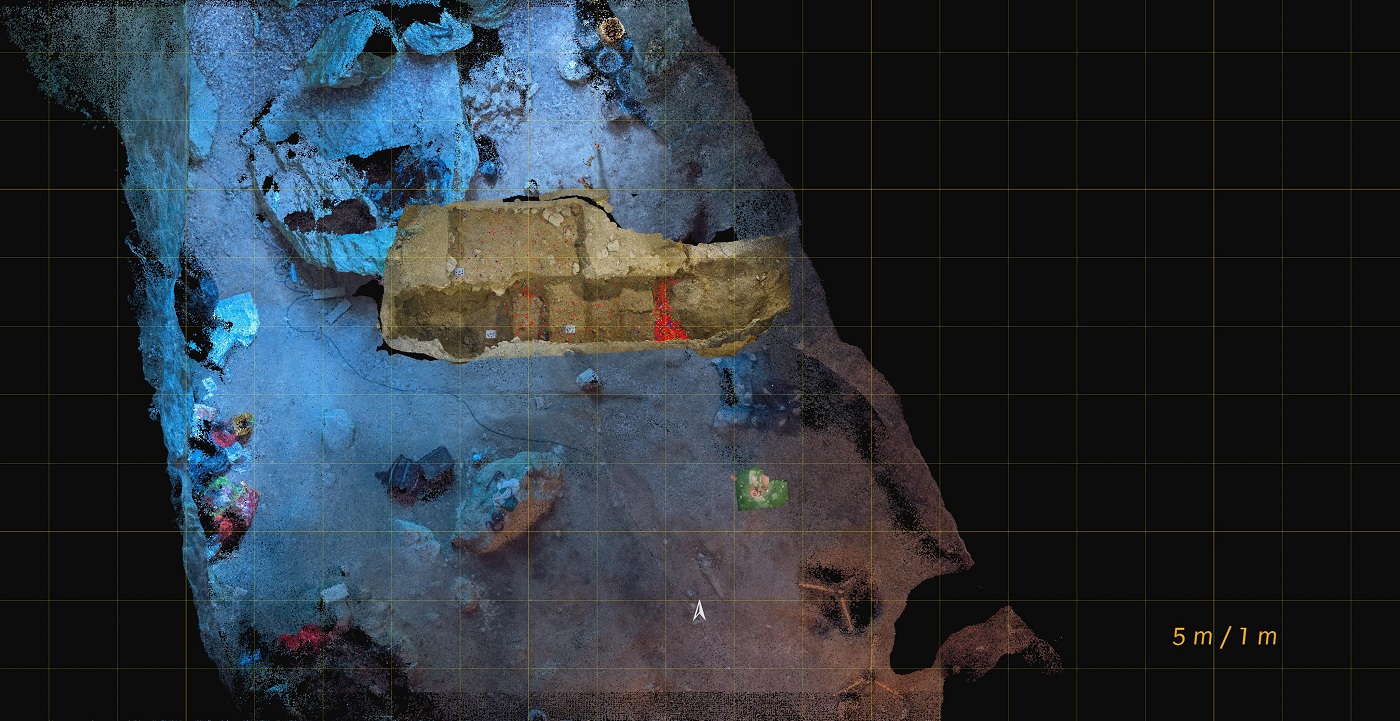UC San Diego Researchers Take a Digital Snapshot of an Ancient Infant Burial Site
Published Date
By:
- Xochitl Rojas-Rocha
Share This:
Article Content
Researchers based at the UC San Diego Qualcomm Institute (QI) and Jacobs School of Engineering have digitally recreated, in painstaking detail, the oldest documented European burial of an infant female. The interactive 3D excavation site, included last week in an article with Scientific Reports (Nature), is being used by an international team to learn more about burial practices, gender-based status and other social behaviors of ancient hunter-gatherer groups.

Cross-section screen capture showing Neve's burial site within the Arma Veirana cave in Liguria, Italy. Archaeologists can use the digital excavation created by UC San Diego researchers to revisit and study Neve's resting grounds from anywhere in the world.
Archaeologists discovered the burial site in 2017 during an ongoing excavation at Arma Veirana, a cave in modern-day Italy. Led by the University of Colorado, Denver and the University of Colorado School of Medicine, the team discovered that the infant, nicknamed “Neve” by researchers, died at 40-50 days old approximately 10,000 years ago, during the early Mesolithic period. Buried with her were more than 60 pierced shell beads, four pendants and an eagle-owl talon.
Prior to advances in 3D scanning technology, archaeologists would have had to go to lengths to document an intact excavation site, including removing entire blocks of substrate for closer study. Now, UC San Diego’s interactive 3D reconstruction of the excavation offers archaeologists a reliable record that can be studied in perpetuity.
“During an excavation, archaeologists really have to pay attention to context and details, like forensic agents trying to recreate a crime scene,” said Dominique Meyer, co-author on the paper, QI engineer and alumnus of the UC San Diego Computer Science and Engineering Department. “The key to the digital reconstruction of the infant burial site was how it related to the context of the cave. This gives answers to the archaeological significance which would otherwise have been forever lost during the excavation process.”
The start of many discoveries
Meyer joined other QI researchers and UC San Diego undergraduate student Danylo Drohobytsky at Arma Veirana from 2017-2019. Over three field seasons, the team collected data and 3D imagery of both the surrounding landscape and burial site using drones and precise laser measurements. They then recreated the landscape and excavation, including Neve’s remains and accompanying artifacts, through a data reconstruction technique that pulls 3D information from photographs.
“Throughout this international and highly interdisciplinary research collaboration, our student-driven team had the opportunity to advance our vision of creating a deep-time archive and ‘digital twin’ of complex archaeological sites,” said Falko Kuester, co-author on the paper and director of the Cultural Heritage Engineering Initiative (CHEI) at QI. “The site’s ‘digital twin’ preserves it as it was originally discovered, making it accessible to future generations.”
Already, Neve’s discovery and preservation represent a meaningful addition to scientists’ understanding of burial practices from the early Mesolithic. Well-documented burials from the time period are extremely rare. Studying the fine details of Neve’s final resting place, from her position in relation to the artifacts to the significant wear and signs of use marking those same ornaments, offers potential insight into gender-based social status and personhood among early peoples.
In the future, scientists may be able to glean more knowledge from the Arma Veirana burial using virtual reality environments at UC San Diego. High-definition facilities like the WAVE, an immersive walk-in VR environment, enable researchers to effectively travel directly to the site as it was, and walk again through the excavation from its start to its current state.
Such collaborations are part of a larger effort at QI to advance fields like archaeology with new and emerging technologies. The CHEI team heads multiple related projects, including the study of submerged archaeological sites in the Yucatán peninsula, Ice Age fossils and the bones of an early American in an underwater cave and delicate coral reef ecosystems.
Share This:
You May Also Like
Stay in the Know
Keep up with all the latest from UC San Diego. Subscribe to the newsletter today.



